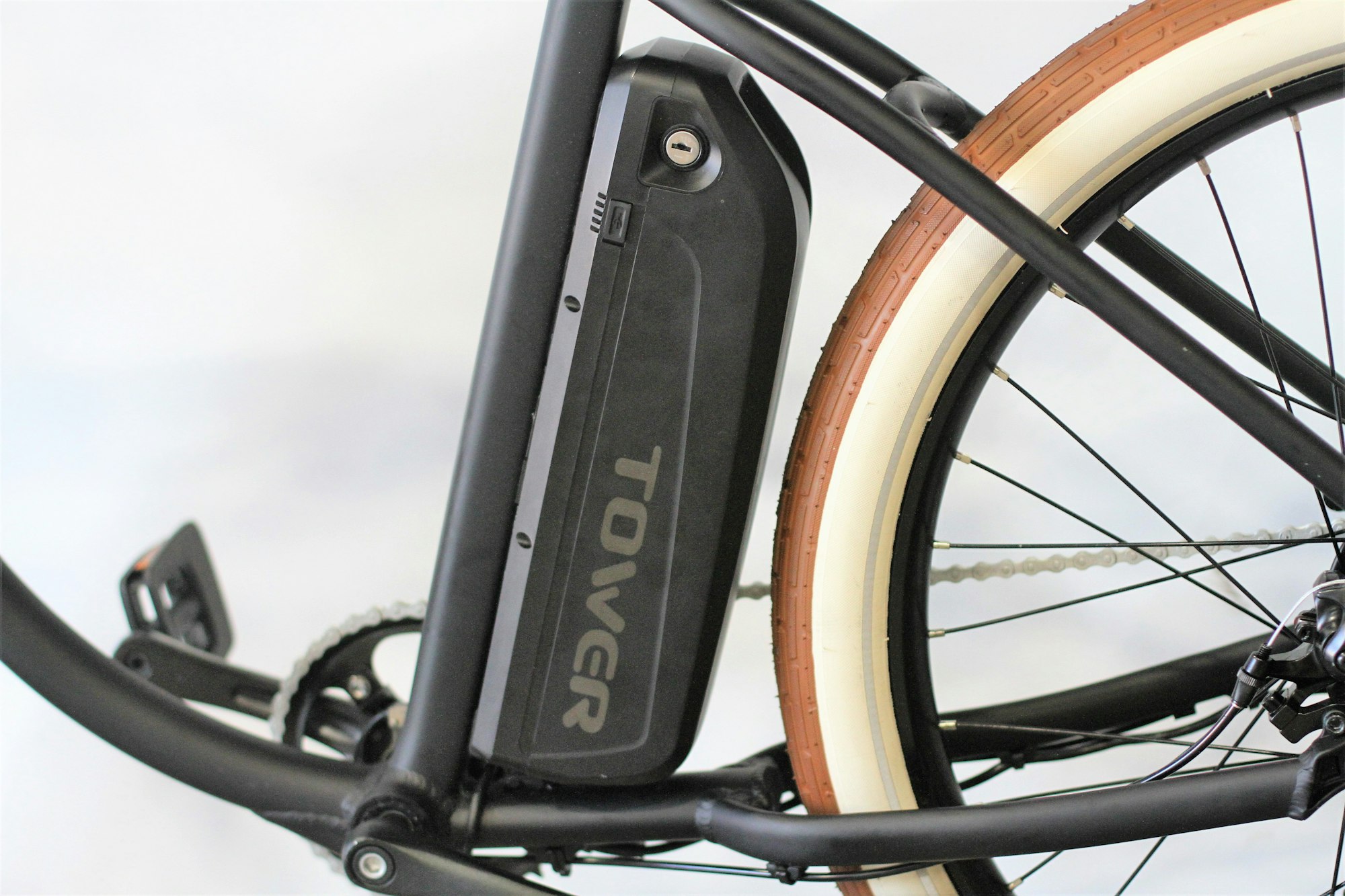This guide delves deep into the essentials of e-bike battery care, offering insights and practical tips to keep your battery in prime condition, ensuring it remains a reliable and enduring companion on your cycling adventures.
Unbeatable Battery Protection With Electric Bike Insurance
Firstly, we have to mention e-bike battery insurance. Replacement batteries can be expensive. However, insuring your bike will protect you against theft, damage and vandalism. Electric bike insurance gives you peace of mind when you know your investment is protected.
What Are Charge Cycles and Why Are They Important?
Battery life is measured in charge cycles. A charge cycle is when you run a battery down to any level and then fully recharge it. A charge cycle happens each time you deplete your battery – whether a complete drain to 0% or just a partial use – and then restore it to total capacity.
For example, if you use up 50% of your battery and recharge it back to 100%, that's one complete charge cycle. Similarly, a cycle is counted if you run the battery flat before recharging.
Why Charge Cycles Matter
When you buy a new electric bike, the time between when the battery was made and when it got to you can be significant. Therefore, as soon as you get your bike, put the battery on charge immediately so you can ride as quickly as possible.
How many charge cycles you get from an electric bike battery depends on how well you have looked after it. But depending on the battery, you should get between 700 and 1000 charge cycles.
Charging Techniques for Enhanced Battery Life
Most lithium-ion batteries thrive when charged correctly. Striking the balance at an 80% charge rather than a complete 100% can significantly prolong the life of your battery.
However, this ideal charging level can vary based on the make and model of your e-bike and the specifics of the battery management system integrated into your ride.
To fully harness the potential of your e-bike battery, acquaint yourself with its optimal charging level. This golden nugget of information is often found in the manufacturer's guidelines or the owner's manual of your bike.
Adhering to these instructions when charging is not just a good practice – it's a commitment to keeping your electric bike in prime condition for the long haul.
Recognising the Signs of Battery Aging
Even with impeccable care, your e-bike's battery won't last forever. As it approaches the twilight of its lifespan, you'll notice subtle yet telling changes in its performance. The most evident sign is its diminished capacity to hold power, leading to a reduced range and possibly altering the dynamics of your rides.
How To Store Your Electric Bike Battery
The key to extending the life of your electric bike's battery lies in how you store it. The golden rule? Keep it at a steady, moderate temperature.
Battling Extreme Temperatures
Remember, when storing your e-bike battery, too hot or too cold can spell trouble. Prolonged exposure to high temperatures can accelerate battery capacity degradation over time, while extreme cold can affect the battery voltage, making it less efficient. This is why learning how to prepare your electric bike for winter is essential.
So, keeping your battery at a consistent, room-like temperature is vital, whether it's the sweltering summer or the frosty chill of winter.
Smart Charging for Longevity
Many of us might be guilty of plugging in our e-bike batteries and leaving them to charge 100%. However, it's wiser to charge your battery to about 60% for long-term storage.
This level maintains a balance within the cells, reducing stress and prolonging battery life. If you're planning to not use your e-bike for a while, this is the way to go.
Using Timers for Safe Charging
Consider using a timer to avoid overcharging – a common pitfall that can lead to reduced battery life. Set it to switch off the power after 5 or 6 hours, ensuring your battery isn't connected to the charger longer than necessary. This simple step can be a game-changer in maintaining the health of your battery.
Understanding Self-Discharge
It's normal for stored batteries to lose some charge over time, a phenomenon known as self-discharge. The rate of this loss can vary depending on storage conditions.
Batteries in extreme temperatures, either too hot or cold, tend to self-discharge quicker. This is crucial to remember if you're storing your e-bike in a garage or shed that's not temperature-controlled.
Is Your E-bike Battery as Safe as It Can Be?
Lithium-ion batteries, while contributing to the weight of electric bikes, are also renowned for their efficiency. However, they come with certain risks, notably thermal runaways and potential fire hazards. A thermal runaway occurs when a battery becomes excessively hot, leading to a chemical imbalance.
This imbalance can cause a rapid increase in temperature, potentially leading to a fire. To mitigate these risks, it's essential to adhere to safety standards set by battery manufacturers. These standards ensure that lithium-ion batteries operate safely under various conditions.
Preventing Battery Fires
Battery fires, although rare, are a severe concern. They can be caused by improper usage, damage, or manufacturing defects. To prevent such incidents, it's essential to follow specific safety practices:
- Regular Inspection: Check your battery for any signs of damage, such as cracks, leaks, or bulges.
- Proper Charging: Use the correct charger for your battery, as the manufacturer recommends. Using an incompatible charger can increase the risk of fire.
- Safe Storage: Store your battery in a dry, cool place away from flammable materials. Extreme temperatures and exposure to direct sunlight can increase fire risks.
Essential Maintenance Tips In Detecting Signs of Damage
Regularly inspect your e-bike battery for any signs of physical damage. Look for cracks, dents, or any deformation in the battery casing. Even minor damage can affect the battery's performance and safety.
Using the Correct Charger
One of the most critical aspects of e-bike battery care is using the correct charger. Always use the charger provided by the manufacturer or one specifically recommended. Using an incorrect charger jeopardises the battery's lifespan and poses significant safety risks.
How To Clean Your Electric Bike Battery in 7 Easy Steps
A clean electric bike battery not only looks good but also performs better. Surprisingly, your e-bike's battery is one of its most waterproof components. However, proper cleaning techniques are essential to maintain its functionality and longevity.
Here are 7 easy steps to follow if you want to keep your battery squeaky clean and in top shape:
Remove the Battery
Begin by carefully removing the battery from your electric bike. This is a crucial step to ensure safety and ease of cleaning.
Wipe with a Damp Cloth
Use a damp cloth to wipe the exterior of the battery gently. Avoid harsh chemicals or abrasive materials that could damage the battery's casing.
Clean the Contacts
The battery contacts are critical for efficient energy transfer. Inspect these contacts for any dirt or grime build-up. Use a specialised contact cleaner to gently clean these areas if you find any. This step helps in maintaining a good connection with your bike.
Apply Dielectric Grease
Consider applying a small amount of dielectric grease on the battery contacts for added protection. This grease helps keep the contacts clean and ensures a secure connection to your bike.
Avoid Water Immersion
While your battery is quite resistant to water, it’s not designed to be submerged or exposed to high-pressure water jets. Stick to a damp cleaning cloth to prevent any water damage risk.
Regular Checks
Make cleaning a part of your regular e-bike maintenance routine. This not only prolongs the life of your battery but also ensures that your rides are smooth and hassle-free.
Understand the Basics Of Maintenance
Your e-bike is a synchronous build of many parts operating in tandem with one another - no part can be wholly separated from the rest. Understanding the basics of e-bike maintenance is essential to learning to keep your battery in top condition.
What Not To Do With Your E-Bike Battery
While electric bikes offer a world of convenience and eco-friendly travel, certain habits can inadvertently shorten the lifespan of their batteries. Knowing what not to do is as crucial as knowing the correct maintenance procedures.
Steering clear of the common pitfalls we list below can significantly enhance the longevity and performance of your e-bike battery. Remember, a little care goes a long way in ensuring your e-bike is always ready for your next adventure.
Avoid Overcharging
One common misstep is leaving the battery plugged in for extended periods. This practice risks damaging the battery and poses a significant fire hazard. To prevent this, disconnect the charger once the battery is fully charged, and consider using a timer to help manage charging duration.
Be Mindful of Temperature Extremes
Storing your battery in a cold garage or a bike shed can be detrimental. Extreme cold can impair battery performance and capacity. If you keep your e-bike in such environments, detach the battery and bring it indoors where temperatures are more controlled.
Similarly, exposing your battery to direct sunlight for prolonged periods can 'cook' it, leading to overheating issues. Always store your e-bike and its battery in a cool, shaded area.
Handling with Care
Be cautious when attaching or removing the battery from your bike. Dropping the battery can lead to internal and external damage, which might not be immediately apparent but can significantly affect its performance and safety.
After a ride, give your battery time to transition from discharge to a more stable condition before charging. Plugging it in immediately can strain the battery cells, reducing their lifespan.
Manage Charge Cycles
Regularly allowing your battery to go from a full 100% charge to a complete 0% discharge can stress the battery. While it's not always avoidable, especially on long rides, it's a practice best minimised to maintain battery health.
Frequently Asked Questions (FAQs) About E-Bike Battery Care
Conclusion: Safeguarding Your E-Bike Battery
In summary, the key to keeping your e-bike battery safe lies in regular maintenance, proper charging practices, careful storage, and handling with care. Remember, a well-maintained battery enhances your riding experience and ensures longevity.
Do you need insurance for your e-bike? For added peace of mind, consider exploring Laka's insurance options, providing comprehensive coverage for your e-bike.
FLEXIBLE E-BIKE INSURANCE THAT DOESN'T COST THE EARTH...
Get covered for theft, accidental damage, full battery cover, loss and more. Try our 5-star reviewed e-bike insurance. With no excess & travel cover included, it's e-bike insurance, and then some.






